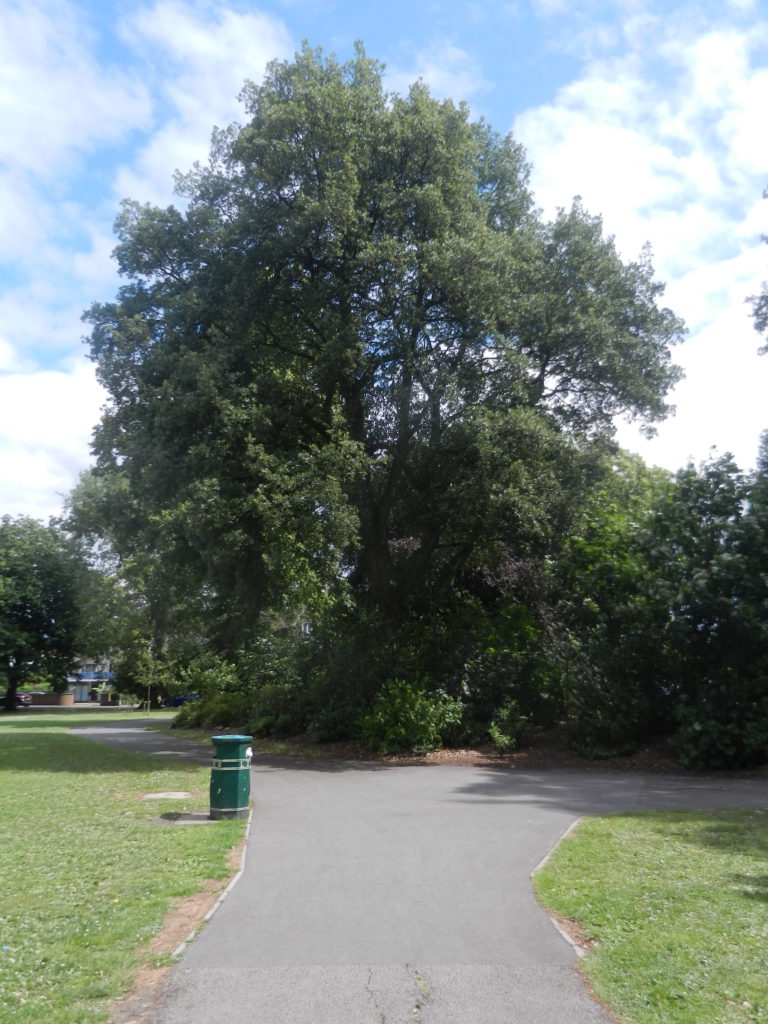
The photo above shows one of the other nearby oak trees to the one shown in the previous blog/post. This individual has a canopy more vertical than the one in the previous picture, the top part of the canopy having a dense leaf coverage while the middle part of the canopy is far more open, this, apparently, common with oak trees.
I have to admit until quite recently I had always thought of oak trees as deciduous, the so-called English Oak being so. ‘Collins Complete Guide to English Trees’ describes as evergreen three of the 16 varieties included. The three are Cork oak, Lucombe oak and Holm oak. None of these are native trees (s.p.b.s) but all have been grown in private grounds, arboretum and municipal parks across England. In the Mediterranean, as the name suggests, the cork oak can withstand having its outer bark carefully removed for wine corking; an ability not shared by most trees. The Lucombe oak is so-called after the surname of an influential tree nursery owner in, or near, Exeter in the 1730s, and was the outcome of an experiment to hybridise Cork and Turkey oaks. Like the Cork oak, the Holm oak is native to southern Europe and, in having a broad dome, is in shape more like the English oak (see later). The Holm oak is mostly at home in southern England.
The term evergreen here is somewhat misleading as the three oaks defined here lose some leaves in the autumn, just not all. That said, apparently the proportion of leaves shed is determined by the winter weather, prolonged very cold spells causing the trees to shed most of its leaves.
So what type of non-deciduous oak tree are the four in Pearson Park? Some say Holm, I think Lucolme, these being readily available to the planners of Pearson Park by the 1860s. What can be agreed is that they are majestic specemins.